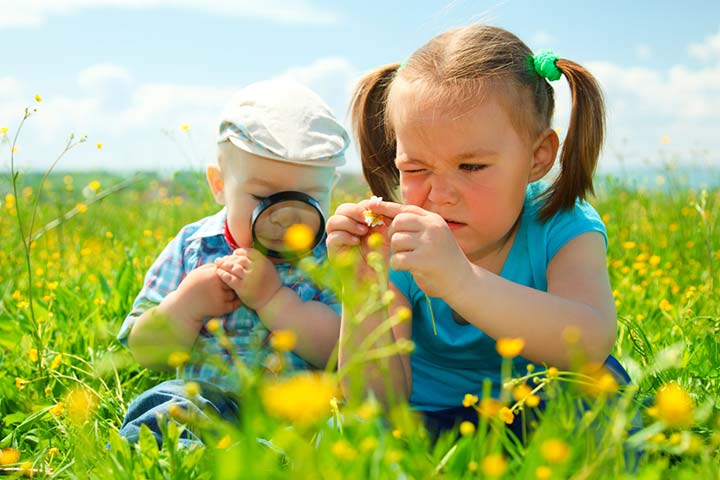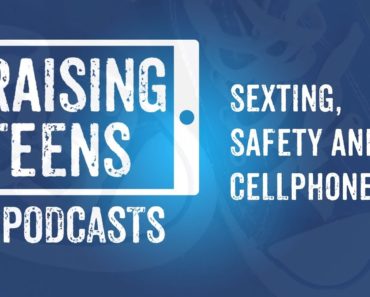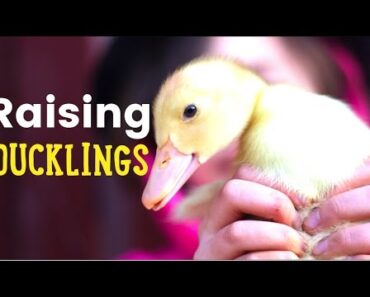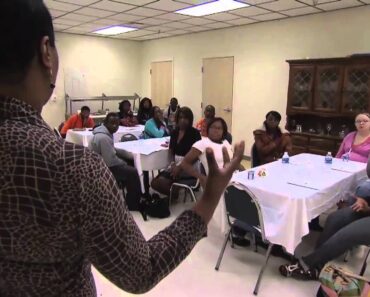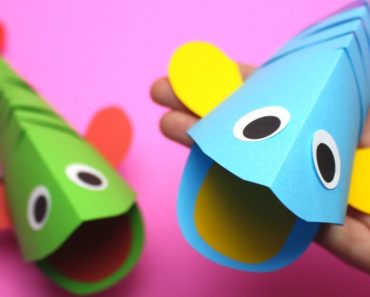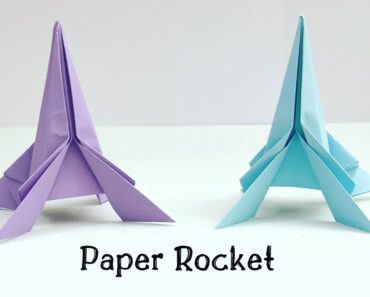Pretty pinks, sunny yellows, ruby reds, oceany blues, and breezy violets — flowers paint the natural world in a myriad of colors and hues. They can brighten up even the dullest of spaces with their beautiful colors, interesting shapes, and pleasant fragrance. It’s not surprising that children, with their curious minds and love for all things bright and beautiful, are naturally drawn to them.
Introducing children to flowers can be the first step at turning them into nature lovers. In this post, we explain the different parts of a flower for kids and provide interesting facts about flowers to satiate their curious minds.
Types Of Flowers
Flowers are categorized into two major types, namely perfect flowers and imperfect flowers (1)(2)(3).
Perfect flowers: Comprising both the male and the female parts, namely the stamens and pistils, perfect flowers can reproduce on their own. These flowers do not need to depend on outside sources to carry the pollen from a male flower to a female flower. Some examples of perfect flowers include roses, lilies, and dandelions.
Imperfect flowers: These are flowers that contain either the male or the female parts. Those comprising only the female parts are called pistillate flowers, and the ones with only male parts are called staminates. They are incapable of reproducing on their own and depend on outside sources for pollination. A few examples of imperfect flowers are melons, cucumbers, pumpkins, and holly.
Parts Of A Flower
Although flowers look simple at first sight, they have a rather complex structure if you study them closely. Several special parts with specific functions make up their complete structure. Some of these parts help the plant reproduce, and others produce sweet nectar to attract insects and bees.
The different parts of a flower can be categorized under vegetative parts and reproductive parts (3)(4)(5)(6)(7)(8)(9)(10).
Vegetative parts of a flower
These are the parts that offer support to the flower.
- Sepals: These are the small, leaf-shaped, and green-colored structures found at the base of the flower. They protect the flower in the bud stage and offer support to the petals when they bloom.
- Petals: The biggest and most prominent part of a flower, petals render each flower its distinct color and form. They help attract bees, butterflies, birds, and insects and also protect the delicate reproductive parts of the flower.
- Pedicel: The pedicel is the stem or stalk of a flower. It provides support to the flower and carries its weight.
- Receptacle: It refers to the part of the stalk where the other parts of the flower are attached.
Reproductive parts of a flower
The reproductive parts of a plant contain the female and the male parts.
Pistil: It is the female reproductive part of a flower and is located at the center. It consists of the stigma, style, and ovary.
Ovary: It is located at the base of the flower and carries seeds, which turn into fruit.
Stigma: Sticky in nature, it is located in the center of a flower. Its stickiness helps to hold the pollen grains when they land on it during pollination. It is here that the fertilization process begins.
Style: This tube-like structure connects the ovary to the stigma.
Stamen: The stamen is the male reproductive part of a flower. It is here that the pollen grains are produced and made available to be carried away by pollinators such as bees, birds, and insects. The stamen is made up of the anthers and the filaments.
Anthers: These store pollen grains. They are mostly yellow.
Filaments: You cannot miss them when you watch a flower closely. They appear as stems and hold the anther at the tip.
Life-Cycle Of A Flowering Plant
It is fascinating that these beautiful creations can sustain themselves and survive despite all odds. Flowers have the ability to create seeds, which when dispersed, grow into new plants. Let’s learn more about the life-cycle of flowering plants (11).
The foremost stage of plant reproduction is pollination. Pollination occurs when the pollen produced by the anther reaches the stigma of the flower. Perfect flowers can self-pollinate, whereas imperfect flowers undergo cross-pollination.
Pollination is facilitated by insects/animals or by the wind.
Insect-pollinated flowers: Bright in color, such flowers release a pleasant fragrance and also produce nectar to lure insects and bees. These insects and bees then transfer the pollen from the anther to the stigmas.
Wind-pollinated flowers: These flowers usually have a dull appearance, and they do not give out any fragrance. These flowers produce excessive amounts of pollen in the anthers located outside the flowers. The wind carries the pollen to their stigmas.
Upon reaching the stigma, a pollen tube grows from the grain and travels to the ovary. The male cells from the pollen reach the female cells in the ovules, fertilizing the plant. The ovule then changes into a seed.
Since plants cannot move from one place to another, they depend on “taxis” to transport their seeds to other places. The seeds get dispersed from the parent plant through bats, birds, bees, the wind, and water. In some plants, the seeds burst open with force when they ripen and launch seeds in the air.
The seeds settle down in their new spot, and with the proper moisture, light, and nutrients from the soil, it breaks open. The roots grow deeper into the soil, and the shoots grow upwards and form the stem.
The stem eventually grows taller and supports the leaves to make food for the plant through photosynthesis.
As the plant grows, it matures and produces buds, which emerge into flowers, and the plant cycle repeats.
Flower Facts For Kids
Here are some exciting facts about flowers that you could introduce to your little ones.
- There are an estimated 352,282 unique flowering plant names in the world (12).
- Rafflesia, found in the forests of Malaysia and Indonesia, produces the largest flower in the world. Each fleshy flower smells of rotting flesh and can reach up to one meter in diameter (13).
- Duckweeds are the smallest flowering plants. Their flowers are so tiny that they are rarely seen (14).
- Montsechia vidalii found in Spain is known to be the oldest flower in the world. Its fossils have been dated to 130-125 million years ago (15).
- Tulips were worth more than gold in 17th century Holland (16).
- Most orchids do not need soil to grow. They absorb water from the air (17).
- Mimosa pudica, also known as touch me not or shame plant has soft green leaves that fold and droop at night or when touched and cooled (18).
- The bird-of-paradise has colorful flowers that look like the head of a bird. It is the official flower of Los Angeles, California (19).
- Matilija Poppy, also called fried-egg plant, has flowers that look like a sunny-side-up (20).
- The monkey-face orchid is an endangered species whose flowers look like the face of a monkey (21).
- The gerbera daisy is famous for producing high levels of oxygen at night while removing harmful chemicals. It is beneficial for people with sleep apnea and breathing disorders (22).
Beautiful to the eyes and fragrant to the nose, flowers appeal to our senses. From the moment they start taking shape as a bud to the time they bloom, flowers have a fascinating journey. They give an insight into how intricate the cycle of life is. Use the information shared in this post to introduce your child to the fascinating world of flowers.
